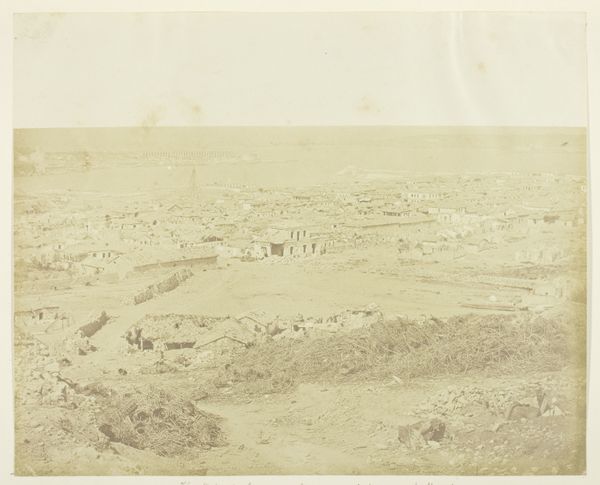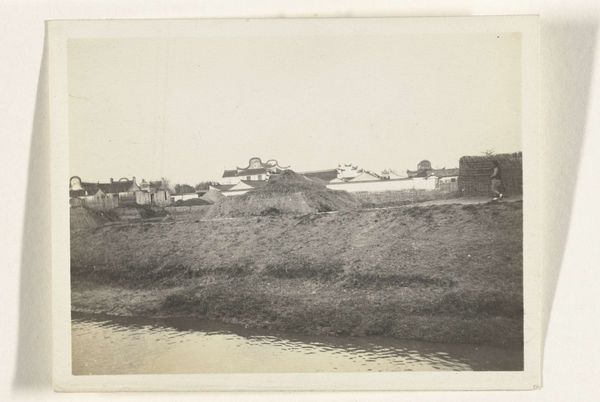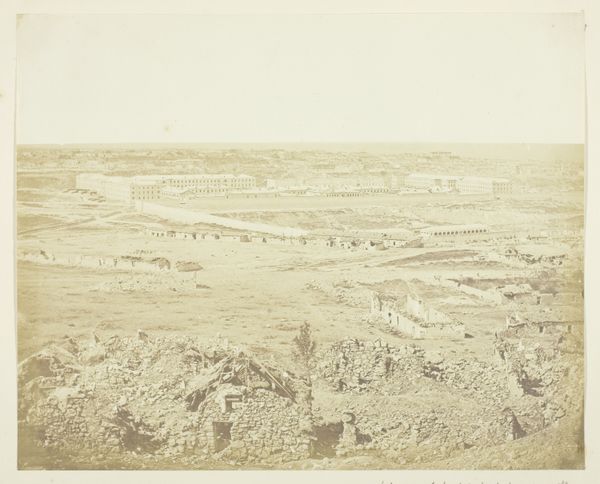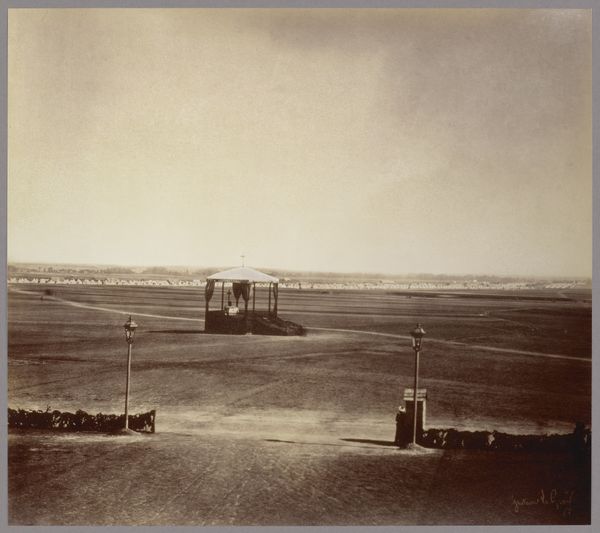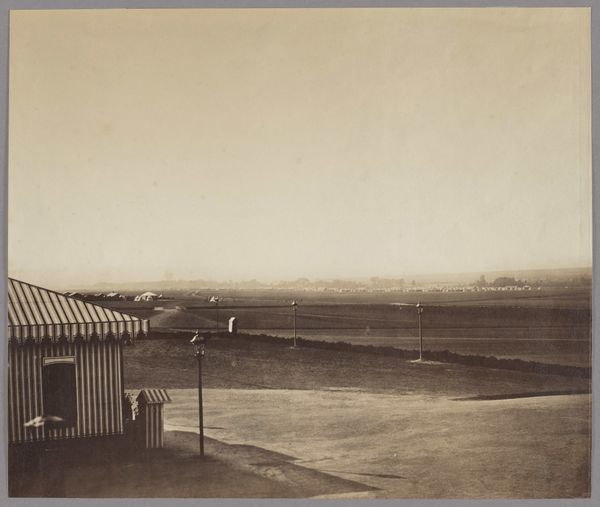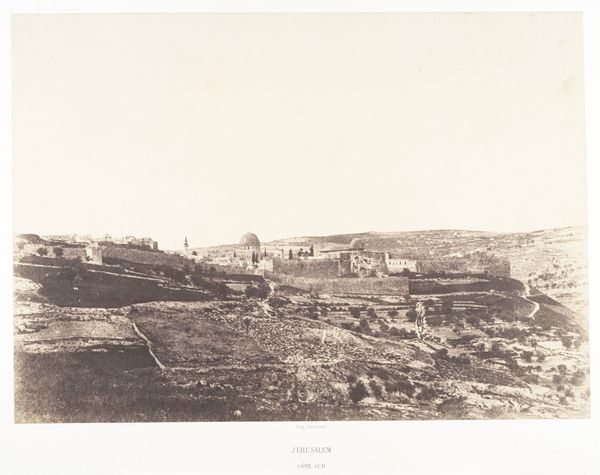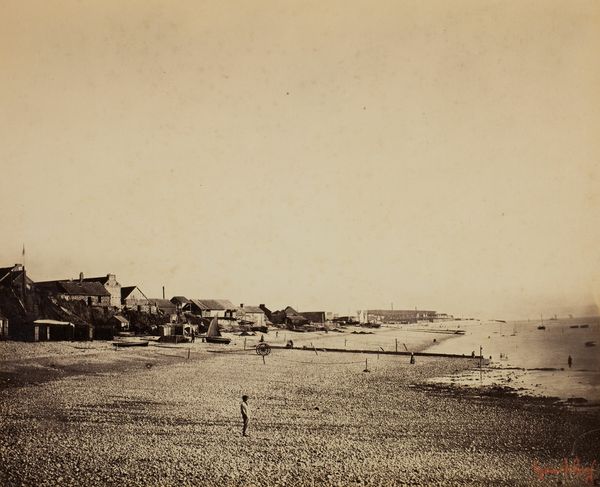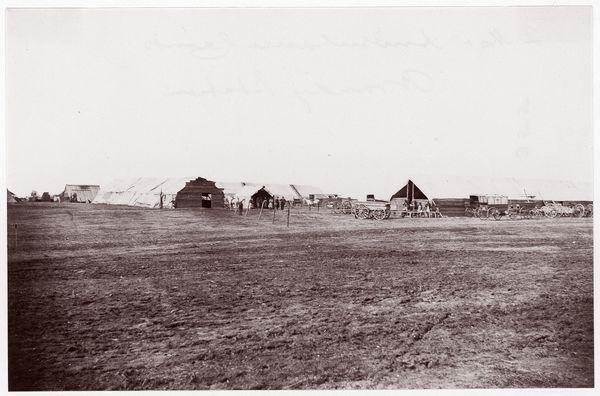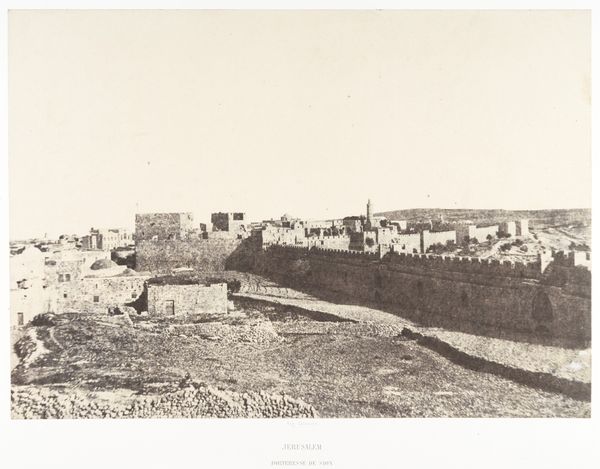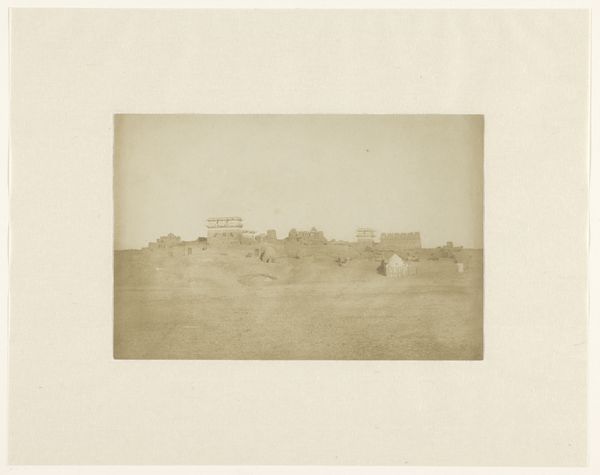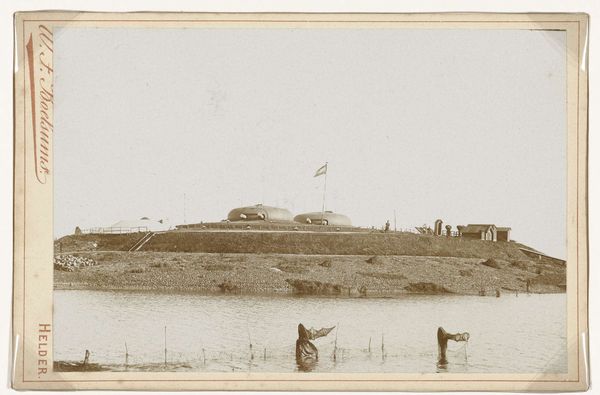
photography
#
landscape
#
ancient-egyptian-art
#
photography
#
ancient-mediterranean
#
realism
Dimensions: image/sheet: 23.3 × 30.3 cm (9 3/16 × 11 15/16 in.) mount: 39.7 × 56.3 cm (15 5/8 × 22 3/16 in.)
Copyright: National Gallery of Art: CC0 1.0
John Beasly Greene created this photograph of Karnak in Egypt using the Calotype process sometime in the 1850s. Greene, an American, moved to France as a child and came of age during a period of intense French interest in Egyptology. Greene was part of a wave of European photographers drawn to Egypt to document its ancient monuments and temples. His work reflects the colonial gaze of the time, framing Egyptian history and culture through a Western lens. The image itself, with its stark composition and emphasis on the ruins, highlights the monumentality of Karnak while also suggesting its decline. Understanding the context of French Egyptology and the broader colonial project is crucial to interpreting Greene's photograph. Examining archival materials, such as travel accounts, colonial records, and the history of museums displaying Egyptian artifacts can shed light on the complex social and political dynamics at play in this image. Art, after all, doesn't exist in a vacuum; it's a product of its time and place.
Comments
No comments
Be the first to comment and join the conversation on the ultimate creative platform.

